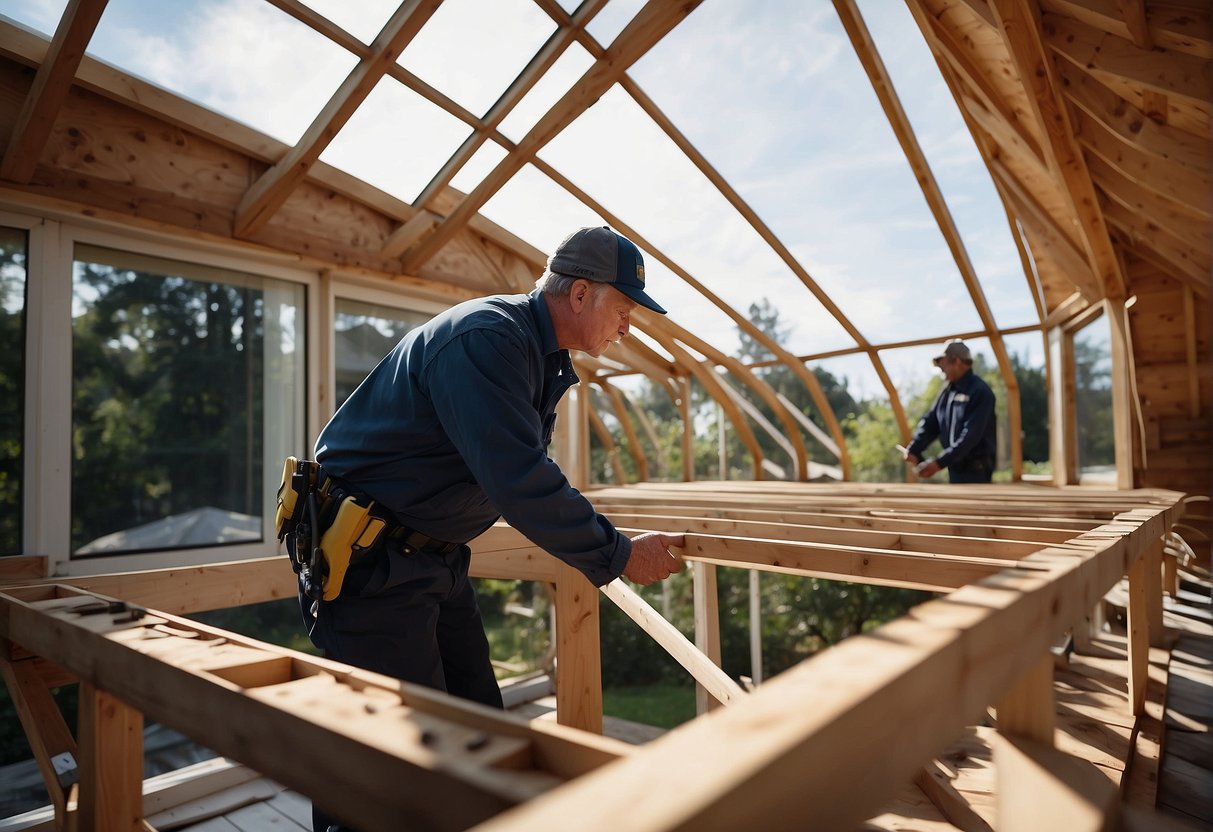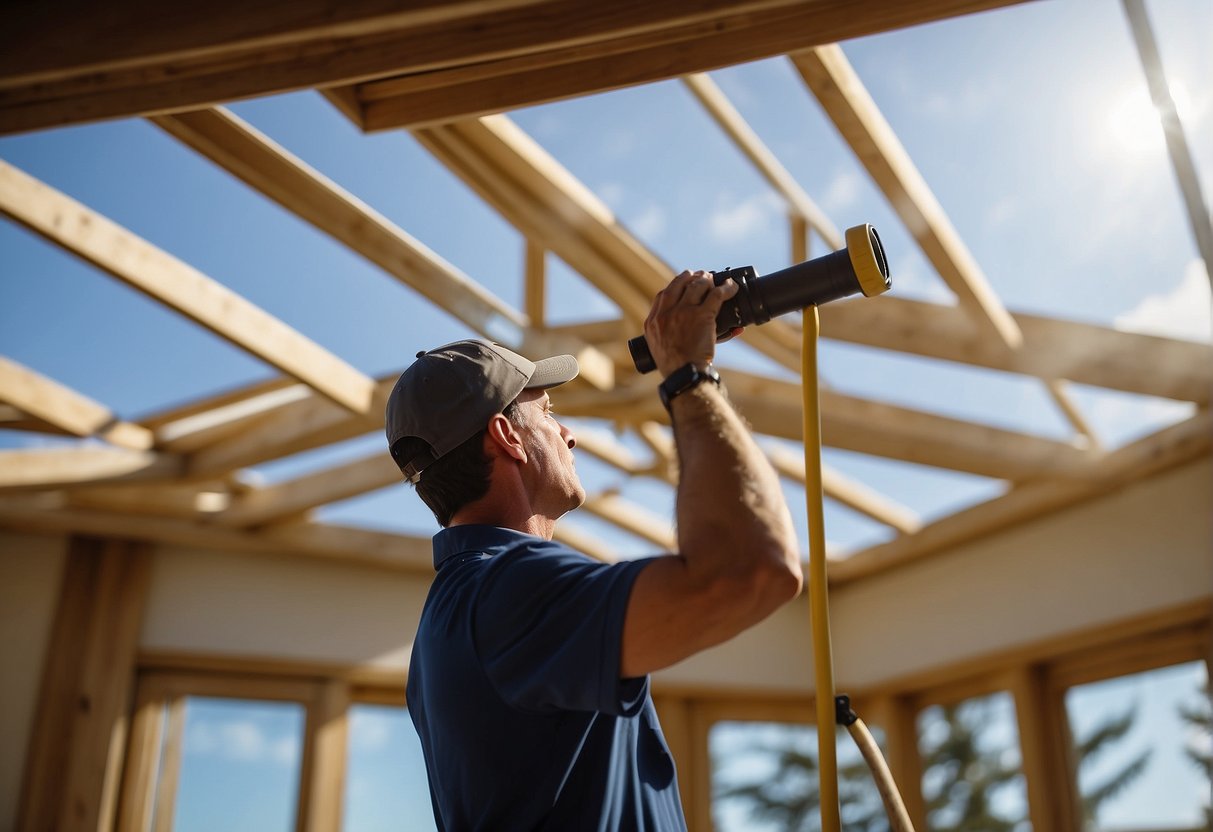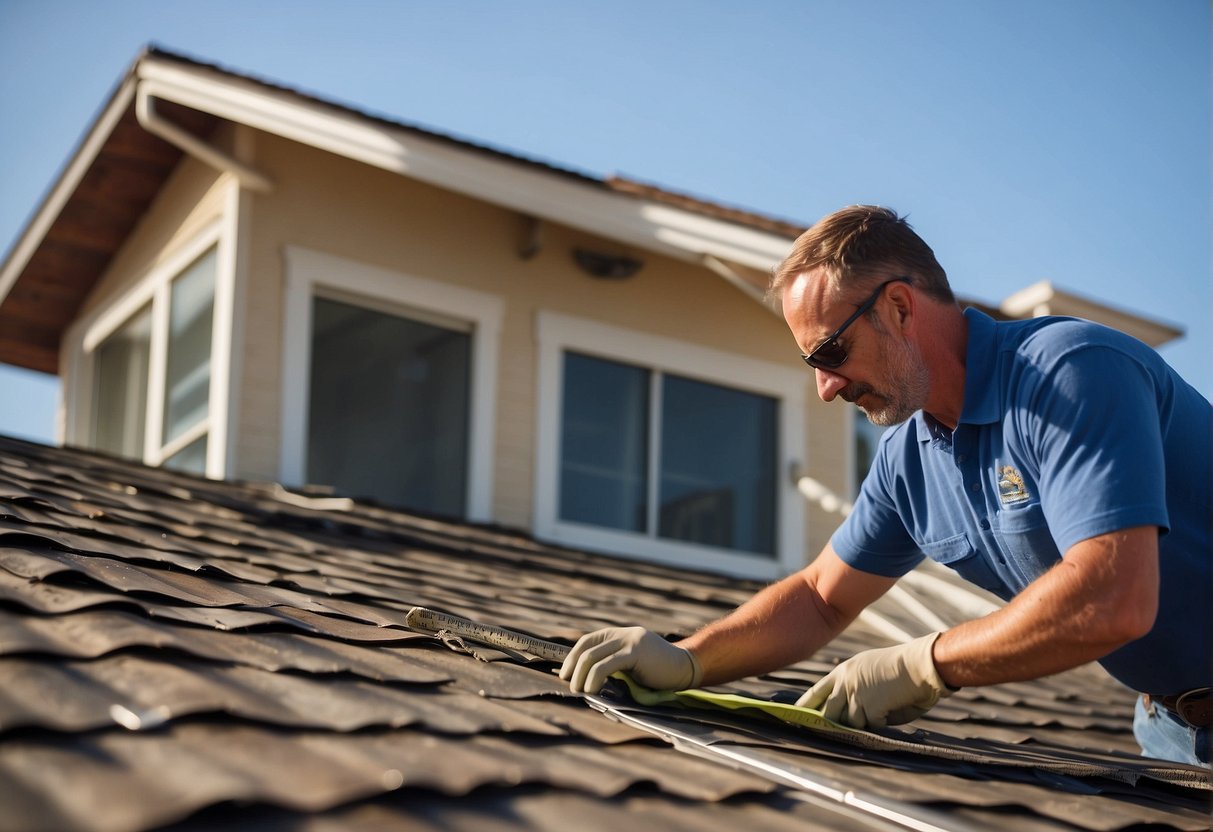A wind mitigation inspection is a thorough assessment of a home’s ability to withstand strong winds, such as those from hurricanes or other intense wind events. Conducted by a qualified inspector, the inspection evaluates specific features and construction elements that contribute to the home’s overall wind resistance. The findings from this inspection not only inform homeowners about potential vulnerabilities but can also play a significant role in reducing insurance premiums. By demonstrating that a home is better equipped to handle high-wind situations, homeowners may be eligible for discounts on their homeowners insurance policies.

Insurance companies often incentivize wind mitigation measures because they can substantially limit damage during storms, reducing insurance claims. The inspection focuses on key areas such as the roof construction type, roof-to-wall connections, window and door protections, and the presence of secondary water resistance barriers. Each of these components affects the integrity of the home and its likelihood to suffer wind damage. Through identifying and possibly improving these features, homeowners can make informed decisions that may lead to substantial financial savings and increase the safety of their residence.
The wind mitigation inspection process includes a comprehensive review of the building’s structural components and the use of appropriate strengthening techniques. Inspectors assess the condition and attachment of the roof, the security of windows and doors, and the effectiveness of the water resistance systems that are in place. Homeowners can then use the detailed report provided post-inspection to address weak points and reinforce their home’s defenses against wind damage. Not only does this proactive approach safeguard the property, but it also often results in lower insurance premiums, making it a financially prudent move for homeowners in wind-prone areas.
Understanding Wind Mitigation

Wind mitigation involves strategies and improvements to structures that minimize damage during high-wind events. Its impact is significant in safeguarding property and reducing insurance premiums.
Purpose and Benefits
Wind mitigation inspections are conducted to assess the readiness of a building to withstand the destructive force of strong winds. Purpose is twofold: to protect the integrity of the property and to provide owners with potential savings on their insurance policies. Buildings with enhanced wind mitigation features may qualify for discounts on insurance premiums, as these features reduce the risk of severe wind damage, which in turn minimizes claims for insurers.
Benefits of wind mitigation include:
- Savings: Homeowners can often see reductions in their insurance costs, as risk to insurers is lowered through mitigation features.
- Protection: Mitigation decreases the likelihood of major damage during storms which can result in decreased repair costs and less disruption for homeowners.
- Peace of Mind: Knowing a property has wind-resistant features can give homeowners confidence in their property’s safety during a storm.
By having a wind mitigation inspection, homeowners are effectively investing in their property’s future stability while also unlocking potential financial advantages.
Components of a Wind Mitigation Inspection

A Wind Mitigation Inspection evaluates specific features of a home that may enhance its ability to withstand or reduce damage during a windstorm. These characteristics are crucial in determining the integrity and safety of the structure.
Roof Shape and Covering
The roof shape determines how well a structure can deflect strong winds. Common shapes include hip roofs, which are more wind-resistant due to their sloped design, and gable roofs, which may require additional bracing. The roof covering is inspected for materials and condition, ensuring they meet the appropriate standards for wind mitigation, such as shingles properly nailed and tiles securely fastened.
Roof Deck Attachment
Roof deck attachment is scrutinized to evaluate the security of the roof deck to the underlying structure. Inspectors check for the type and spacing of nails or other fastening methods. Properly attached roof decks can greatly reduce the risk of the roof peeling off during high winds.
Roof to Wall Connection
Inspectors look at the roof to wall connections, such as toe nails, clips, single wraps, or double wraps. Adequate connections can prevent the roof from detaching from the walls in high wind conditions. This subsection often involves checking the existence and quality of metal straps or other securing mechanisms that anchor the roof structure to the walls.
Secondary Water Resistance
Secondary water resistance is a feature that provides an additional layer of protection from water intrusion should the primary roof cover fail. Inspectors assess the presence of a self-adhering membrane adhered to the roof deck or the application of a protective coating that helps prevent leaks.
Opening Protection
For opening protection, inspectors evaluate windows, doors, including garage doors, and skylights to ensure they are either impact-resistant or protected by shutters. These reinforcements help prevent breaches that could lead to pressurization and structural failure during a wind event.
The Impact on Insurance
Wind mitigation inspections can provide substantial benefits regarding home insurance, often leading to significant insurance discounts and reduced premiums for homeowners. Incorporating wind mitigation features can directly correlate with lower risks for property damage in high-wind events.
Insurance Discounts
Homeowners may qualify for wind mitigation credits, which translate to discounts on their home insurance policies. Insurers evaluate features such as roof shape, construction materials, and additional reinforcements that improve wind resistance. The presence of these characteristics means a home is better suited to withstand high-wind events, prompting insurers to offer wind mitigation discounts due to the reduced likelihood of wind-related claims.
- Discount Criteria: Common features evaluated for discounts include roof-to-wall attachments, window protection systems, and roof deck attachments.
- Credit Amount: The actual discount varies, but certain wind mitigation features can lead to significant savings on insurance costs.
Reducing Premiums and Risk
Implementing wind mitigation measures can decrease insurance premiums by lowering the risk of wind damage. Insurance companies determine premiums based on the assessed risk; hence, improved wind mitigation reduces this risk, which can lead to more affordable premiums for the policyholder.
- Premium Calculation: The premium is often recalculated to reflect the reduced risk post-inspection.
- Risk Reduction: By addressing key areas such as roof, walls, windows, and doors, a home becomes more resilient against storms, which is advantageous for both the insurer and the insured.
Inspection Process and Reporting
Before embarking on a wind mitigation inspection, it is crucial to understand the process and the documentation that follows. A certified inspector conducts a thorough review of key areas, which culminates in a comprehensive inspection report.
Conducting the Inspection
The inspection process begins when a certified inspector assesses various structural features of a home to determine its ability to withstand strong winds. The inspector evaluates:
- Roof shape and construction methods
- The presence of gable end bracing
- Roof-to-wall connections: clips, toe nails, or straps
- Wall construction type and materials
- Secondary water resistance that prevents the roof from leaking if shingles are blown off
- Window, door, and garage door protections against wind-borne debris
Inspectors typically use a checklist to systematically record the strengths and weaknesses of the home’s wind-mitigating characteristics.
Wind Mitigation Report
Upon completion of the inspection, the inspector compiles a wind mitigation report. This document includes:
- Inspector Information: The inspector’s name, license number, and contact information.
- Findings: Detailed notes on the home’s ability to withstand or mitigate damage from high-wind events.
- Photographic Evidence: Photos that substantiate the inspector’s findings.
- Recommendations: Any suggested improvements or repairs to enhance wind resistance.
The report serves as a formal record of the home’s wind mitigative features and is used for insurance purposes, often leading to potential discounts. Homeowners may contact the inspection company for further details or if they have additional questions.
The inspection is a crucial component of home maintenance and insurance in areas prone to windstorms, providing both safety recommendations and potential insurance benefits.
State Regulations and Compliance
Wind mitigation inspections are critical for Florida homeowners to ensure compliance with state regulations. These inspections correlate directly with the Florida Building Code, which sets forth specific standards designed to enhance a building’s resistance to high-wind events.
Florida Building Code
The Florida Building Code (FBC) is an extensive set of regulations enforced statewide to ensure that homes and buildings are constructed to withstand the harsh weather conditions often experienced in Florida. These codes are particularly stringent with respect to wind mitigation as Florida is prone to hurricanes and other high-wind events.
Key Elements:
- Roof Covering: All roofing materials and their installation must meet specific wind resistance standards.
- Roof Deck Attachment: The code specifies how the roof deck should be secured to the underlying structure.
- Roof to Wall Connections: Enhanced attachments, such as metal straps, are required to prevent the roof from detaching from the walls.
| Requirement | Objective |
|---|---|
| Opening Protection | All windows and doors must have impact resistant coverings or be constructed of impact-resistant glass. |
| Secondary Water Barriers | These are designed to reduce the chance of water intrusion should the outer roof layer fail. |
| Roof Shape | Certain roof shapes like a hip roof are known to perform better under wind stress. |
For a Florida home to pass wind mitigation inspection, it must adhere to these codes. Insurers often incentivize homeowners to meet or exceed these requirements through discounts on insurance premiums, thereby acknowledging the home’s reduced risk profile.
Documentation: Upon completion, inspectors provide a report detailing how a home’s features align with the Florida Building Code requirements. This report is often necessary for homeowners to qualify for insurance discounts.
Additional Considerations
When considering a wind mitigation inspection, homeowners should be conscious of the potential expenses and the savings involved, as well as common queries that arise during the process.
Costs and Savings
The cost of a wind mitigation inspection can vary depending on the location, size of the home, and complexity of the structure. Generally, the price ranges from $75 to $150. However, the savings on insurance premiums can be significant over time, often surpassing the initial investment. By identifying improvements that strengthen a home’s defense against wind damage, families may reduce their insurance costs by roughly 20% to 30%.
- Potential Savings
- Insurance premium discount: 20% – 30%
- Inspection cost: $75 – $150
Residents along the coast are particularly likely to benefit from these savings due to the higher risk of wind damage from tropical storms and hurricanes.
Common Questions
Homeowners often have questions regarding the wind mitigation inspection process. A frequent inquiry is about the specific improvements that can be done to enhance a property’s wind resistance. Examples of such improvements include:
- Reinforced roof attachments
- Impact-resistant windows and doors
- Secondary water resistance barriers
These enhancements not only provide peace of mind but they are investments in a family’s safety and the longevity of the home. It’s essential to consult with a qualified inspector to assess which specific improvements would be most beneficial for a particular residence.
